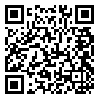Background: Spinal cord injuries are among the most common problems originated in human societies. In our country this problem takes into account more seriously when considering the devotees of 8-year imposed war.
Materials and methods: After filling the questionnaire and receiving necessary educations, paraplegic patients walked on a course like "figure of 8" with preferred speed for 5 minutes. Heart rate, blood pressure, and RPE were measured. Tests were achieved in three stages, each time with a different crutch. Axillary crutch, elbow crutch, and walker were used randomly. Energy cost was assessed using two novel indices PCI (Physiological Cost Index) and RPE.
Results: 10 paraplegic patients with mean age of 34±4.99 yrs, height of 167cm, and weight of 64.6kg had entered this study. All of them had spinal cord injuries, averagely occurred for 3.8±3.3yrs. Mean of PCI was measured 1.94, 1.58, and 1.65 beats/min for axillary crutch, elbow crutch, and walker, respectively. Mean of walking speed was higher with elbow crutch. Regarding the RPE, results have revealed that when patient has little balance, walker is the preferred device but in case of good balancing then elbow crutch is the device of choice. Patients with complete spinal cord injuries have shown lower PCI comparing with those who had incomplete injuries. This was proved in other studies, too. Meanwhile, walking speed in patients with complete injuries was 1.4 times as likely as those who had incomplete injuries.
Conclusion: Using crutches and exercising could lead to higher cardiovascular readiness that would be accompanied by lower PCI. Employing walking-aid devices in rehabilitation centers seeks more attention.
Received: 2007/01/28 | Published: 2001/09/15
| Rights and permissions | |
 |
This work is licensed under a Creative Commons Attribution-NonCommercial 4.0 International License. |


